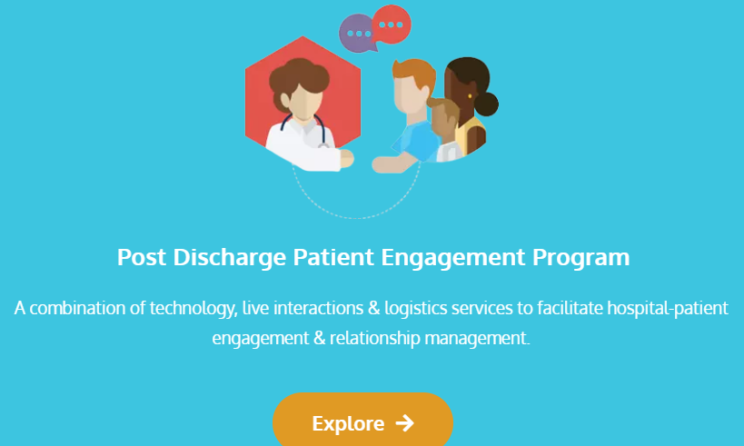
In this series, we investigate the idea of Patient Experience as a result measure and Patient Engagement as the Strategy that medical care associations and suppliers take to decidedly affect the Patient Experience. In this article, we feature how post-release follow up gives the chance to close the circle and augment the patient experience past the four dividers of the emergency clinic.
Considering that we have investigated that a powerful tolerant commitment system needs to meet the patient at the point they are at in their consideration venture, it is essential to investigate how suppliers can keep on conveying remarkable consideration during the post-release time frame.
Each tolerant merits convenient development and emergency clinics can’t bear not to cause present release on follow up a critical piece of their essential arrangement. The results of not broadening your patient commitment technique outside of the four dividers are critical; and incorporate helpless patient clinical results, diminished patient fulfillment, and 30-day readmissions.
There are such countless instances of patients requiring extra help and proactive effort is a critical piece of a patient commitment methodology to forestall damage and increment patient fulfillment. Suppliers who empower post-release commitment have the chance to perform administration recuperations before the HCAHPS overview being finished, and all the more significantly, can forestall antagonistic occasions, for example, a readmission from happening.
Mechanized Outreach is a Valuable Asset for Engaging Patients
As a general rule, suppliers can’t track down the committed assets to physically contact every one of their patients post-release. Assuming there are committed assets, they may just zero in on a little subset of patients, normally those apparent to be the most elevated danger. While this is unquestionably better compared to no patients getting follow up, each persistent (for certain rejections), particularly those released to home, ought to get a subsequent call.
Indeed, even with completely staffed call focuses, it tends to be trying to guarantee there is steady effort to each understanding, also guaranteeing they get a get back to in the event that they don’t answer the main call. This is the place where mechanized effort ends up being a very strong commitment apparatus. With innovation, emergency clinics can contact 100% of patients, and do as such on numerous occasions all through the 30-day window. There is no possibility that somebody neglects to attempt a get back to if incapable to arrive at the first or second time. By connecting with patients during this crucial time post-release, the association shows its devotion to guaranteeing a protected change.
Follow up not just causes patients to feel more certain about their consideration, however it gives the chance to play out any help recuperation. In the event that a patient had a negative collaboration or is uncertain with regards to their release guidelines, the subsequent connection can assist with settling the worry and proactively address the issue. This is a significant piece of a compelling patient commitment technique and at times resolving an issue later release occurs at the perfect opportunity and is fundamental in keeping patients happy with their consideration.
Post-Discharge Follow Up in real life: How Upstate University Hospital Improves Outcomes and Experiences with Centralized Outreach
Upstate University is a scholastic clinical focus situated in New York. As an enormous medical services supplier, it was basic to observe a proficient interaction for post-release follow up. By making follow up efficiencies, Upstate realized they could emphatically affect readmission rates. As well as working on tolerant results, the clinical focus additionally saw the subsequent cycle as a method for guaranteeing patients were happy with their consideration.
To expand assets, Upstate set up an incorporated group liable for all post-release follow up. By consolidating the devoted assets with Cipher Outreach for long term follow up, the group had the option to resolve patient-announced issues rapidly and successfully. This speedy reaction time and proactive effort prompted long term upgrades in both readmission rates and HCAHPS scores, showing the positive effect this commitment has on persistent encounters.
With impetuses attached to both patient fulfillment scores and readmission rates, proactive follow up is a demonstrated increase patient engagement that can assist with amplifying these motivators. By giving opportune development, your association can genuinely show the devotion to giving excellent consideration and drive further developed dedication. Assuming you would like extra data, I welcome you to peruse the full contextual investigation and reveal the cycle that Upstate followed to accomplish positive results and encounters for their patients year over year.






